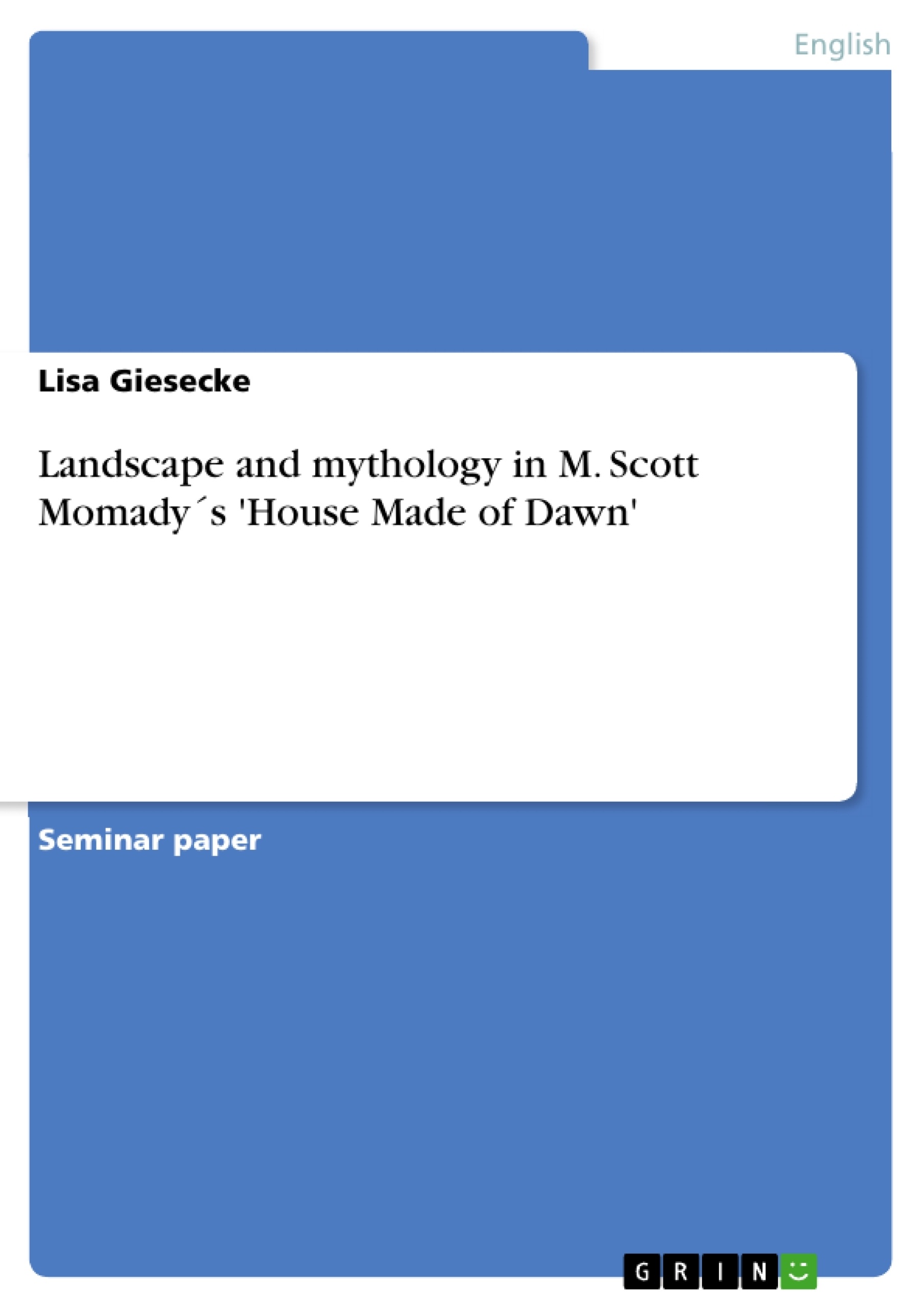In 1969 the rather unknown Native American author N. Scott Momaday won the Pulitzer Price for fiction with his first novel House Made of Dawn. Until that time Native American fiction was quite unpopular; but Momaday’s’ novel certainly evoked the interest of the western audience. He was able to explore many important issues and conflicts the Native American community had to face in the twentieth century and – what was even more important – developed a narrative strategy to convey these issues to a bigger and, above all, multicultural audience.
As Momaday covers so many themes in his novel, I decided to focus on the role of the landscape with its mythology and its powers. As it shows, the landscape plays an important role in this novel as well as in Native American beliefs.
Table of Contents
- Introduction
- 1.1 N. Scott Momaday - Biography
- 1.2 House Made of Dawn - Summary
- Exploring the Novel
- 2.1 House Made of Dawn - Structure
- 2.1.1 Numbers
- 2.1.2 Elements of Oral tradition
- 2.2 Landscape and Mythology
- 2.3 Landscape
- 2.4 Snake and Eagle Motif
- 2.5 The Dawn Runner
- Conclusion
Objectives and Key Themes
This work examines the role of landscape and mythology in N. Scott Momaday's novel "House Made of Dawn," exploring the complex relationship between Native American culture and the natural world. It analyzes how Momaday uses these elements to convey the struggles and experiences of the Native American community in the 20th century.
- The impact of landscape on Native American beliefs and identity
- The role of myth and tradition in shaping Native American culture
- The psychological and social consequences of assimilation and loss of traditional culture
- The importance of the individual's connection to their heritage
- The resilience and adaptability of Native American communities in the face of adversity
Chapter Summaries
The novel "House Made of Dawn" is structured in four main parts, each exploring different aspects of Abel's journey toward self-discovery and reconciliation with his Native American heritage. The prologue introduces Abel as a young man running through a timeless landscape, setting the stage for his complex journey.
- The first part, titled "The Longhair," focuses on Abel's return from World War II to his hometown, Walatowa, and his struggles to adjust to life back in the community. It also explores his childhood memories, including his mother's and brother's death, his encounter with the Eagle Watchers Society, and his eventual decision to leave Walatowa to join the army.
- The second part, "The Priest of the Sun," takes place in Los Angeles, where Abel is sent for resocialization after being sentenced to prison for murder. This section delves into Abel's internal conflict, contrasting his Native American heritage with the modern American society he finds himself in. It also includes the perspective of a Native American preacher, highlighting the tension between traditional beliefs and Christian influence.
- The third part, "The Night Chanter," explores Abel's desperation, lethargy, and inability to find a sense of belonging in Los Angeles. It culminates in his return to the Pueblo, where he seeks solace and connection to his roots.
- The fourth part, "The Dawn Runner," focuses on Abel's grandfather, Francisco, and his death, showcasing the beauty and wisdom of traditional Native American culture. Abel participates in the traditional race, signifying his acceptance of his heritage and his role in the community.
Keywords
The novel explores themes of Native American identity, cultural assimilation, landscape, mythology, and the resilience of tradition. Key concepts include the impact of war and post-war trauma, the relationship between nature and spirituality, and the importance of ritual and storytelling in preserving cultural heritage.
- Citation du texte
- Lisa Giesecke (Auteur), 2006, Landscape and mythology in M. Scott Momady´s 'House Made of Dawn', Munich, GRIN Verlag, https://www.grin.com/document/78260



